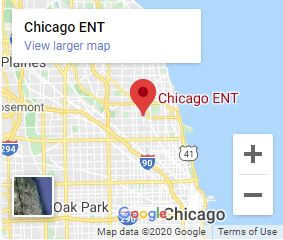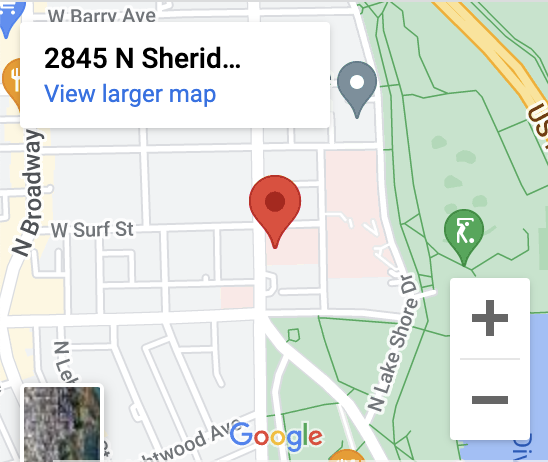Rhinoplasty
If you have always been bothered by your nose shape or simply wish to improve your facial harmony, rhinoplasty may be able to achieve the look you have always desired. Cosmetic nose surgery is a highly popular technique to recontour the nose, and the results can potentially enhance your entire facial appearance. Many patients pursue rhinoplasty to address long-held insecurities about their nose, but the procedure can also repair a previously broken nose and/or a deviated septum. Frequently, the surgeon pairs rhinoplasty with septal reconstruction and turbinate surgery to concomitantly help improve nasal breathing. They are also an expert in reconstructive nasal surgery and septal perforation repair.
Rhinoplasty is a facial plastic surgery procedure designed to reshape the nose to create a more favorable and proportional facial aesthetic. It is one of the most popular surgical procedures in the United States and is performed hundreds of thousands of times per year. the surgeon’s approach to rhinoplasty involves re-shaping the existing nasal tissues into an improved shape and position, while keeping these structures well supported to create a natural look that will last and supports nasal breathing.
Every person has unique reasons for considering rhinoplasty, some of which may include:
- To make the nose and facial features more proportional
- To reduce the size or width of a nose that appears large or wide
- To correct a hump, bump, or an overly arched or “Roman” nose
- To improve the angle between nose and upper lip
- To reshape a nose tip that appears crooked, pointed, bulbous, or boxy
- To perform secondary surgery following a previous rhinoplasty
- To treat nasal birth deformities or defects
What Can Rhinoplasty Address?
During your consultation, the surgeon will ask you about your goals and expectations for surgery. Depending on your anatomy, rhinoplasty can improve a number of issues concerning:
The nasal bridge nose surgery can achieve more harmonious facial features by correcting bumps in the nasal bridge, straightening a crooked bridge, or making the nasal bridge thinner or wider.
The nasal tip rhinoplasty can reshape the nasal tip to appear wider or narrower, as well as raise or lower the angle of the tip.
The nostrils when nostrils appear overly prominent or slight in comparison to the rest of the facial features, surgical enhancement can increase or decrease the size in relation to your facial proportions for a more balanced aesthetic.
The septum a deviated septum often causes breathing problems; however, nose surgery can effectively repair and realign the septum to help improve airflow through the nasal passages.
Who is a Candidate for Rhinoplasty?
Ideal candidates for rhinoplasty are typically those who are in relatively good health. During your consultation with the surgeon, they will perform a facial analysis as well as an examination of your nasal airway. They often use images to help explain the process based on your facial proportions and to help her gain an understanding of your treatment goals. Together, you will arrive at a plan for what aesthetic changes are achievable and most beneficial based on your facial proportions as well as your aesthetic goals.
the surgeon is also a specialist in revision rhinoplasty for patients, who are interested in correcting a previous nose surgery that resulted in complications, breathing obstruction, or dissatisfaction over the years.
How is the Rhinoplasty Procedure Performed?
Rhinoplasty is an outpatient procedure with a recovery of about 1 week. the surgeon will make a tiny incision between your nostrils with all other incisions inside the nose. You will have splints in your nose for about 5-7 days and a tape and cast on the outside, but no painful nasal packing is used. Bruising may occur and last for a few days to up to a week. Even though subtle swelling from rhinoplasty takes up to a year to fully resolve, most of the swelling goes down within 2-3 months and you will already notice a difference in your nasal shape as soon as the cast comes off.
Revision Rhinoplasty
What is a Revision Rhinoplasty?
A rhinoplasty is a cosmetic procedure that changes the appearance of the nose. The nose is a complex structure that is subject to gravity, changes with aging, and if a prior rhinoplasty was done, scar contracture can occur. The nose is not only a very visually noticeable structure in the middle of our face, but it also serves the very important function of breathing. Unfortunately, in some cases, patients may not be happy after a previous primary rhinoplasty due to cosmetic deformities that either were not fully addressed in the previous surgery or even may have resulted from the surgery. Other issues might be breathing difficulty from nasal valve collapse, lack of support or from scar contractures. In these cases, a revision or secondary rhinoplasty can repair the appearance and/or the function of the nose.
Who is a Revision Rhinoplasty Suited For?
Patients may choose to undergo revision rhinoplasty to address either a lingering or new cosmetic deformity or to address nasal breathing difficulties after having previously undergone rhinoplasty. Revision rhinoplasty is one of the most technically challenging procedures, so if choosing to undergo a revision rhinoplasty, it is important to carefully select an experienced surgeon who specializes in rhinoplasty.
Revision rhinoplasty frequently requires re-supporting the framework of the nose through cartilage grafting. If you’ve had a previous septoplasty, additional cartilage material may be used from the ear, or the rib. The latter may be a part of your own rib or that of a donor. During your consultation with ChicagoENT’s facial plastic surgeon, you will receive an in-depth analysis of your nasal passage as well as the aesthetic appearance of your nose. They will be able to guide you on realistic expectations and outcomes and together you will arrive at a treatment plan. Nasal endoscopy during which the surgeon takes a look deeper inside your nasal passage and/or CT imaging can help provide additional information on where the nasal obstruction is and how to best address it. Photo simulation may help show you what a reasonable aesthetic outcome may be.
What is Having a Revision Rhinoplasty Like?
Every nose is different, which is even more true after having had a prior rhinoplasty. Sometimes the exact issues that are causing the suboptimal aesthetic appearance or the nasal obstruction are not fully known until the time of surgery. Therefore, revision rhinoplasty is a procedure that is very unique to each patient. But the general approach is usually through an open approach via a small incisision in between your nostrils. All other incisions are inside your nose. This approach affords the surgeon the best visibility and best access to all the structures in your nose. Frequently, cartilage grafting is needed to help reshape your nasal tissue and to provide a more aesthetically pleasing shape and/or to help provide support for improved breathing. This cartilage may come from a donor rib graft, your own rib, or from ear cartilage if there isn’t sufficient septum left in your nose.
Revision rhinoplasty is an outpatient procedure, with the patient fully asleep. Because it is a revision surgery, healing can take longer than it did during you first rhinoplasty, and swelling usually lingers for longer – up to 1.5 years or even longer depending on the thickness of your skin. That said, most of the swelling resolves by 2 months. As with primary rhinoplasty, it is important to stay away from exercise and strenuous activity for 4-6 weeks during the healing period to avoid exacerbating any swelling that may lead to permanent asymmetry.
Dorsal Hump Reduction
What is a Dorsal Hump Reduction?
A dorsal hump reduction is a procedure designed to reduce or eliminate a dorsal hump on the bridge of your nose. The dorsal hump is a natural bump or hump on the nose composed of excess cartilage and bone, usually most prominent on side or profile view.
Some people are unhappy with the shape of their nose with a dorsal hump, making them seek this cosmetic procedure to attain the desired nose shape.
Who is Right for a Dorsal Hump Reduction?
Some people naturally have a dorsal hump, which is also called an aquiline nose, Roman nose, or hook nose. This nose shape can give you a very distinct appearance.
However, if you’re not satisfied with the shape of your nose, undergoing a dorsal hump reduction may be the right decision. There are many kinds of rhinoplasties designed to change the appearance of common nose shapes. If you’re unhappy with the shape of your nose, a rhinoplasty or dorsal hump reduction may be the answer.
How Does It Work?
A dorsal hump reduction can be performed in several ways, depending on both the surgeon and the patient. It’s usually an outpatient procedure that uses general anesthesia to put patients to sleep.
Through a “closed rhinoplasty” technique, the surgeon removes excess cartilage and bone through incisions inside the nose. “Open rhinoplasty” involves a tiny incision at the narrowest part of skin between your nostrils with all the other incisions inside the nose. This incision heals with a virtually invisible scar and can allow for improved visualization of the structures inside the nose. the surgeon does both open and closed technique depending on the patient’s case and the desired outcomes.
Dorsal hump reduction is one of the most common reasons people undergo rhinoplasty. At the same time, any tip changes can be made in addition to correcting any nasal breathing issues or nasal obstruction if need be.

















